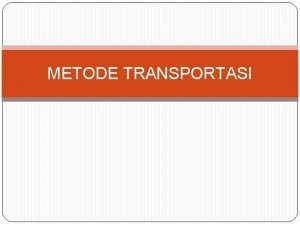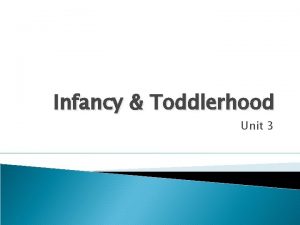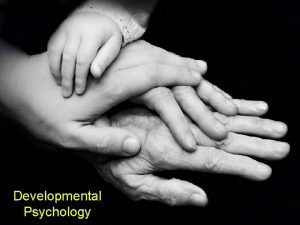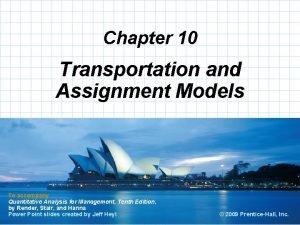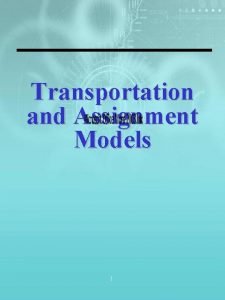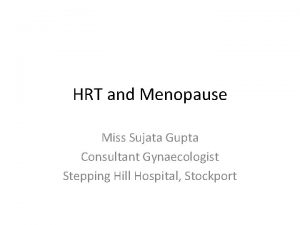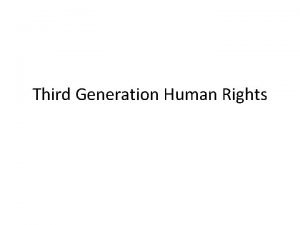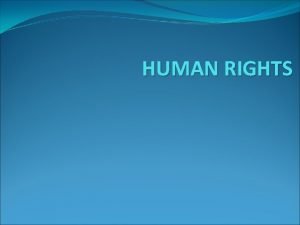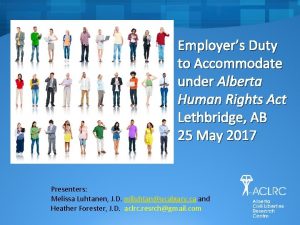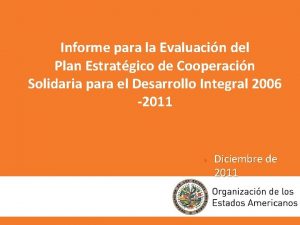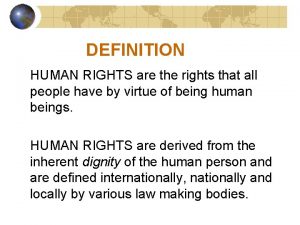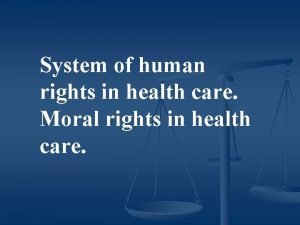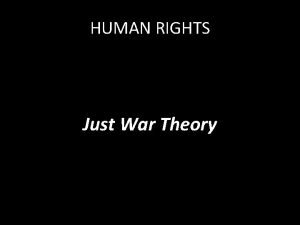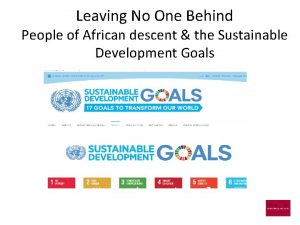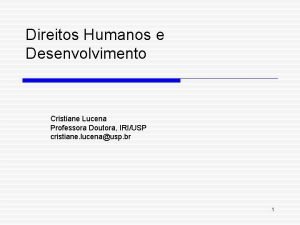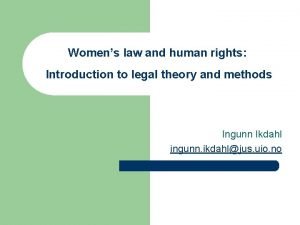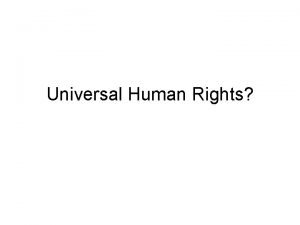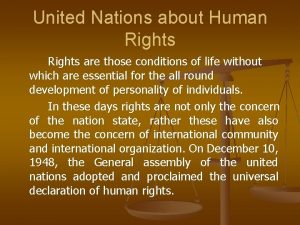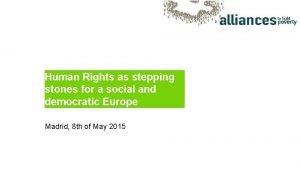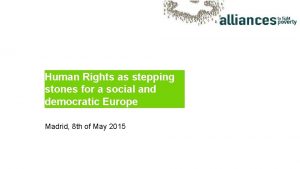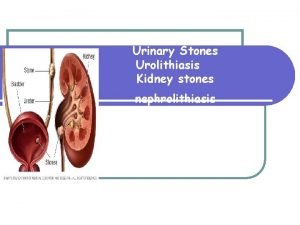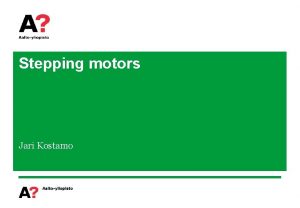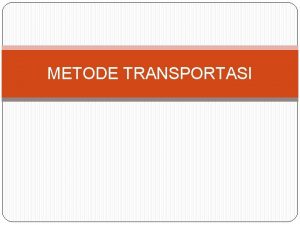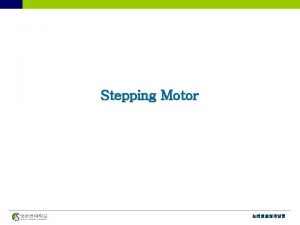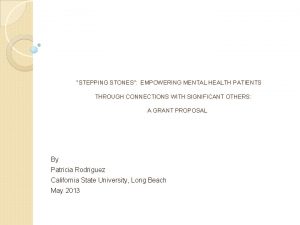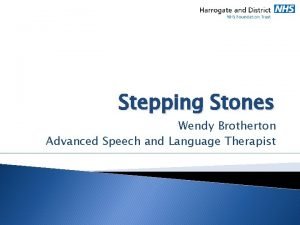Human Rights as stepping stones for a social






























































![II. 2. Sustainability of the pay-as-you-go pension System [Funding: Pay-as-you-go versus capitalization] Return of II. 2. Sustainability of the pay-as-you-go pension System [Funding: Pay-as-you-go versus capitalization] Return of](https://slidetodoc.com/presentation_image_h/9f9931d759b7741b2ae0cc7ed24c5397/image-63.jpg)




































- Slides: 99

Human Rights as stepping stones for a social and democratic Europe Madrid, 8 th of May 2015

Introduction Michel Debruyne, Beweging. net

The Alliances and RE-In. VEST Informal ● Open ● Promoting the idea of coalitions to fight poverty ● Formal ● Closed ● Enriching the social investment package ●

The European Semester 2014 -2015: facts and figures Michel Debruyne and Peter Lelie

2020 target on poverty and social exclusion

Evolution of risk of poverty or social exclusion by country 2008: 30% 2013: 33%

Who is paying the crisis?

Evolution of the sub-indicators of ‘people at risk’

Financial distress by income quartile 2000 -2014

Financial distress (1 income quartile households) in the EU Member States, 2015 Q 1

Unemployment rate (total and youth) in the EU and EA

Long-term unemployment rates EU 28, 2008 -2013

At-risk-of-poverty rate by economic activity

In-work at risk-of-poverty rate

Number of MS showing significant improvements/deterioration in key social indicators (2012 -2013)

Number of MS showing significant improvements/deterioration in key social indicators (2008 -2013)

Number of deteriorating SPPM indicators 2008 -2013

Conclusions

A social and democratic agenda for the European Semester Introduction by prof. dr. Jonathan Zeitlin (University of Amsterdam)

Socializing and Democratizing the European Semester Jonathan Zeitlin University of Amsterdam November 2014

Plan of the presentation • I. Socializing the European Semester: significant rebalancing since 2011… • II. But still a participatory deficit • III. Towards better governance: parity, process, participation • IV. New developments: further socializing the European Semester?

I. Socializing the European Semester 22

Europe 2020: towards a more social EU? • Europe 2020 Strategy, adopted by EU in 2010, was designed to have a stronger social dimension, compared to Lisbon Strategy for Growth & Jobs (post-2005) – – ‘Inclusive growth’ as one of 3 overarching priorities EU-wide poverty reduction goal as one of 5 ‘headline targets’ ‘European Platform against Poverty’ (EPAP) as one of 7 ‘flagship initiatives’ ‘Promoting social inclusion & combating poverty’ as one of 10 integrated guidelines 23

The European Semester as a new post-crisis governance architecture for the EU • EU institutions (COM, Council, European Council) set priorities for the Union in Annual Growth Survey (AGS), review National Reform Programmes (NRPs), & issue Country-Specific Recommendations (CSRs) to Member States (MS), backed up in some case by potential financial sanctions • Brings together in a single annual policy coordination cycle a wide range of governance instruments with different legal bases & sanctioning authority – SGP, MIP, Integrated Guidelines, Europe 2020 objectives & targets • Process has given EU institutions a more visible & intrusive role than ever before in scrutinizing & guiding national economic, fiscal, & social policies 24

Founding ambiguities of Europe 2020 • Relationship between fiscal/macroeconomic surveillance & thematic coordination? • Role of social & employment actors in European Semester? • Future of the Social OMC? • Poverty/social inclusion goals inserted in Employment Guidelines despite different Treaty base & powers 25

Initial experiences: worst fears confirmed? • COM disinvestment in Social OMC – MS no longer requested to produce National Social Reports; COM withdraws from Joint Social Report – exclusive focus on Europe 2020 – EPAP created w/o consultation w/ social actors, & largely repackages pre-existing initiatives (e. g. annual Convention) • First European Semester (2011) – AGS & CSRs focus on fiscal consolidation • Emphasis on financial reform of pensions & health care; benefit conditionality & ‘making work pay’ • Only 3 CSRs on poverty/inclusion, all to NMS, despite weak national targets – Prescriptive ‘one-size-fits-all’ approach • COM seeks to use multilateral surveillance by MS as a tool for additional peer pressure in implementing top-down structural reforms • Social actors largely excluded from preparation & review of NRPs/CSRs 26

Rebalancing 2012 -14: policy orientations • Annual Growth Survey – ‘Tackling unemployment & social consequences of the crisis’ added as a key priority – Focus on education, training, individualized activation services – Emphasis on improving effectiveness of soc protection systems – Active inclusion as a vital policy tool for addressing social consequences of the crisis • Employment Package, Compact for Growth & Jobs, Youth Employment Package, Social Investment Package – New policy commitments, financial measures, recommendations, reporting/monitoring procedures 27

Rebalancing 2012 -2014: progressive socialization of CSRs • 2014: 12 MS receive CSRs on poverty/social inclusion – 11 MS receive recs to ensure adequacy & coverage of social benefits; 6 urged to improve accessibility & quality of public social services • 19 receive CSRs on health care &/or pension reform – Purpose is to ensure that systems ‘continue to be socially adequate’ & ‘to provide universal access to high-quality care’, as well as cost-effective & financially sustainable • Still some ‘anti-social’ recommendations – e. g. decentralization of wage determination (6 MS ); EPL reform (2); unemployment benefit conditionality (1) • But overshadowed by much larger number of positive CSRs, many focused on social investment – Most MS urged to improve ed, training, & activation systems; many to reduce early school leaving (8); improve skills (12); implement youth guarantee (8); enhance ed outcomes & lab mkt access for disadvantaged groups (7); increase availability of childcare (9); promote employability of older workers, e. g. through lifelong learning (11) 28

Reviving the Social OMC • 2011 Social Protection Committee (SPC) initiative to ‘reinvigorate’ Social OMC – Endorsed by EPSCO Council – Update common objectives, continue regular strategic reporting, enhance mutual learning, strengthen analytical capacity (indicators), improve stakeholder involvement – MS invited to prepare regular NSRs, covering all strands of Social OMC, as input into annual SPC Social Report – Annual SPC Social Europe Report w/ same core features as previous JSR, feeds into Joint Employment Report 29

Extended social monitoring • SPC has also established itself as a key player in monitoring, reviewing & assessing nat’l reforms w/in the Euro Semester, alongside EMCO, EPC, EFC – Contributes with EMCO to Joint Assessment Framework (JAF) for monitoring EU Employment Guidelines – Developed its own Social Protection Performance Monitor • Complements EMCO Employment Performance Monitor • ‘Dashboard’ of indicators to monitor social dimension of Europe 2020 across all OMC strands • Detailed country profiles & common ‘trends to watch’ – Social indicators inserted into MIP and new EU ‘Social Scoreboard’ 30

31

Intensified multilateral surveillance & peer review • From shallow annual reviews of NSRs to continuous, in-depth thematic & country reviews of NRPs/CSRs – Emphasis on providing opportunities for mutual learning while building support for reform implementation through MS challenging each other • Innovative pilot programs of ex ante review of major social reforms, linked to voluntary peer reviews • Parallel developments in SPC and EMCO 32

Enhancing the influence of social & employment actors • Intensified monitoring, multilateral surveillance, & peer review enhanced role for social & employment actors in adoption of CSRs, culmination of European Semester • Multilateral examination of COM’s draft CSRs by EMCO & SPC successfully proposing amendments to Council, despite high hurdle of qualified majority voting (QMV) • Mobilization by EPSCO over ‘political ownership of social issues’ & push back against over-prescriptive COM approach – ‘MS need some leeway to choose the implementation path that best suits their national conditions, especially in areas which remain within their competence’ – ‘deeper dialogue’ between COM & MS, ‘both bilateral & multilateral, is essential to ensure CSR quality & ownership’ (Presidency Report to Council 2012) 33

34

Towards a revised procedural framework for the European Semester • Revised procedural framework for 2013 ES, based on clearer allocation of responsibilities and cooperation between economic, social & employment ctees – Coordinated review of CSR implementation & draft CSRs by SPC in cooperation with economic and employment committees (EMCO, EPC, EFC), & Council WPPHSL on health care issues – Amendments justified by results of multilateral surveillance, & supported by QMV to test MS support – SPC & EMCO produce formal reports on CSR examinations to meet Council’s ‘comply or explain’ obligations for modifying COM’s proposed recommendations • New procedural arrangements reaffirmed, despite some coordination glitches, in 2014 35

Gradual if partial ‘socialization’ of the European Semester • Growing emphasis on social objectives & targets in CSRs • Intensified social monitoring, multilateral surveillance & peer review • Enhanced role for social & employment actors in EU coordination processes and procedures – despite continuing jurisdictional struggles with economic policy actors about overlapping issues (esp. linked to MIP) • Increased capacity of SPC & EMCO to amend COM draft CSRs, based on evidence from MLS 36

II. But still a participatory deficit • Limited involvement of civil society & other stakeholders in (social partners, LRAs) in preparation of NRPs – Despite recital 16 of Empl Guidelines & guidance note from COM SECGEN on preparation of NRPs • Little opportunity for stakeholder input into multilateral reviews of NRPs/CSRs, or annual priority setting (AGS) • Agenda of EPAP Convention & stakeholder dialogues tightly controlled by COM • Deficit recognized by EPSCO conclusions (June 2013) – Need to improve involvement of civil society & social partners in CSR process ‘in order to ensure broader social acceptance of reforms’

Eppure si muove? • Some signs of movement even on nat’l participation front • COM Social Investment Package earmarks 20% of ESF funds for ‘promoting social inclusion & combating poverty’ • Access conditional on preparation of national poverty reduction strategies involving key stakeholders • Evidence that civil society networks in some countries are using this commitment to enhance their involvement in NRPs – E. g. Poland • Other positive examples of engagement by CSO platforms with preparation of NRPs where government channels are open to them (e. g. ES, FR, IE, SK) -- interest is clearly there

III. Towards better governance • Mid-term review of Europe 2020 & advent of a new Commission offers an opportunity to build on recent developments within the European Semester to ensure that the EU’s post-crisis governance architecture continues to become more socially balanced, contextually sensitive, & learning-oriented • Exploit common ground among EU social actors: – EMCO/SPC, EPSCO, Semester Alliance/EAPN, DG EMPL • 3 ‘P’s: parity, process, participation

Parity • Need for a better balance between the EU’s social, economic, & financial objectives • Refocus the European Semester on delivery of Europe 2020 objectives of smart, sustainable, & inclusive growth, as well as soc, ed, & empl targets • Adopt an integrated & holistic perspective on national reforms in CSRs & COM Country Reports, incl social impact assessment (SIA) • Ensure parity for EU social & employment policy actors -- and indicators -- with their economic counterparts in Semester governance – Reinforce role of ‘Social Scoreboard’ as an early warning system for social imbalances within and beyond the Eurozone

Process • Institutionalize revised procedural framework for ES, based on a clearer allocation of responsibilities & cooperation between ec, soc, & empl committees – Allocation of roles should be based on substantive expertise & competences rather than formalized procedures (e. g. MIP) – Overlapping issues should be jointly reviewed, with decisions based on evidence and argument rather appeals to authority • Orient ex post multilateral surveillance of NRPs & CSRs towards effective mutual learning as well as compliance enforcement, & link it to ex ante reviews of proposed reforms • Ensure that CSRs leave sufficient space for MS to find their own ways of meeting reform challenges, while providing operationally useful guidance in helping them do so

Participation • Need for greater participation by civil society actors in ES at both EU & national levels • Provide stronger guidance to MS about stakeholder participation in drafting & implementation of NRPs • Exploit ESF requirements for preparation of national poverty reduction strategies to encourage stakeholder engagement • COM & Council (+ EU committees) should take the lead in opening opportunities for civil society participation at EU level in each phase of the Semester, from AGS NRP/CSR review CSR adoption • Involvement of non-gov stakeholders with direct experience of policy implementation can make a distinctive contribution to the epistemic quality of the ES as an ‘evidence-based’ process, beyond that of COM & committees of MS officials • Like other process improvements, this requires a more realistic timetable for deliberation & revision of key texts (AGS, CRs, NRPs, CSRs)

A renewed role for the EPAP? • Added value of the EPAP widely questioned – A platform in search of a purpose • Integrate EPAP into the European Semester – Task it with following up, monitoring, & reviewing progress on social dimension of Europe 2020, at nat’l & EU levels – Support structured consultation process for stakeholder input into NRPs through creation of national platforms – Contribute to EU multilateral surveillance & peer review of NRPs/CSRs, by engaging SPC/EMCO as well as COM – Transform the Convention into the capstone of the annual cycle, through stocktaking & reporting, exchange of good practices, identification of promising approaches to common problems, & debate on ways forward – Redraw the flow chart of the European Semester to include civil society actors

IV. New developments: further socializing the European Semester? • • • The new Commission’s ambiguous stance A revised timeline for the Semester An enhanced role for EPSCO & its committees Amending the Integrated Guidelines Further socializing the European Semester

The ambiguous stance of the new Commission • Juncker’s commitments to ‘Social AAA’, SIA, social dialogue • Annual Growth Survey – Does not prioritize inclusive growth – Messages on fighting unemployment & modernizing social protection acknowledge need to combine efficiency & financial sustainability with adequacy of benefits & enabling services – Proposes to open up Semester process to dialogue w/ parliaments & SPs – but not civil society (wh/ should be more involved in implementation) • Draft Integrated Econ & Empl Guidelines – Build directly on key messages of 2015 AGS – Less direct emphasis on fighting poverty & fostering social inclusion than in 2010 Guidelines – Recitals call for partnership in implementation w/ parliaments, local/regional authorities, social partners, & civil society, but less broadly than in 2010 • no reference to involvement in elaboration, monitoring, & evaluation of NRPs • MT review of Europe 2020 Strategy put off until 2016 – Consultation report acknowledges weaknesses in implementation & stakeholder involvement, lack of visibility of flagships, distance to targets

A revised timeline for the Semester • Publication by COM of a single Country Report (reform agenda + imbalances) earlier in the cycle (March) • Draft CSRs published earlier (May), in order to allow fuller deliberation w/in & between MS • Changes aimed at facilitating multilateral discussions, allowing MS to provide feedback on assessments, & better preparation of discussions on draft CSRs • A direct response to complaints from the Council & its committees • Welcomed by SPC & EMCO as ‘effective in ensuring a deeper multilateral surveillance…& stronger national ownership of CSRs’


An enhanced role for EPSCO & its committees • New Council decisions on SPC & EMCO – Aimed at strengthening role of committees & EPSCO Council in European Semester process, & ensuring consistency in coordination of economic, employment, & social policies – Ctees should contribute to all aspects of the Semester w/in their competence & report on them to the Council – Ctees should cooperate closely w/ each other as well as other relevant ctees (EPC/EFC, WPPHSL, Education, No. PES) – SPC should cooperate w/ social NGOs as well as SPs • Meeting of SPC with Social Platform on 2015 AGS

Amending the Integrated Guidelines • SPC proposals for amendments to new guidelines – Labor mkt & social system reforms shd promote social cohesion as well as growth & employment (GL 2) – In shifting taxation away from labor, need to ensure adequate revenue for social protection (GL 4) – Foster social inclusion by complementing universal w/selective approaches & promoting integrated & preventive approaches (GL 8) – Appropriate mix of pension options depends on specificities of nat’l systems, sustainability challenges, current & projected future adequacy, & shd be accompanied by broader reforms of active labor market policies & social protection systems (GL 8)

Further socializing the European Semester • SPC and Luxembourg Presidency preparing a series of own initiative reports for autumn 2015 – Social Impact Assessment of structural reforms which have been introduced by MS since crisis – Distilling benchmarks for evaluating past & prospective reforms from common messages in EU & SPC documents – Report on ‘further socializing the European Semester’ through ‘ 3 Ps’ (parity, process, participation) • Vanhercke & Zeitlin – Presidency conference on ‘Social AAA’ (October 2015)

The possibility of the sustainability of the welfare state under the conditions of austerity. Dr. Concepcion Patxot (University of Barcelona)

The possibility of a sustainable welfare state under austerity conditions Ció Patxot (Universitat de Barcelona) Barcelona Centre d’Anàlisi Econòmica i de les Polítiques Socials (CAEPS), Xarxa de Referència d’R+D+I en Economia i Polítiques Públiques

Intervention scheme I. The welfare State from a “static” perspective I. 1. Reasons for State intervention in the economy I. 2. Evaluation II. Dynamic aspects and extensions II. 1. Population aging: “fiscal” effects II. 2. Sustainability of the pension System a) An illustrative calculation of the sustainability in the short and long term b) Simulation models of the pension System III. 3. What about the rest of the welfare state?

I. 1. Reasons for State intervention in the economy Neoclassical paradigm: Assuming “perfect competition” (No market power), i. e. : • Perfect information • Homogeneous good • Many sellers and buyers + Implicit assumption: rational individuals- consumers and producers-, who seek their individual interest (methodological individualism) The market is “efficient”, it works: leads to a win-win situation for all, though everyone seeks only individual interest (“invisible hand”) State intervention needed, for “efficiency” : • Minimum functions, conditions for markets to work: regulate property rights, security, etc. • Provision of pure public goods. • Market failures (of perfect competition conditions)

I. 1. Reasons for State intervention in the economy State intervention needed, for “equity”: • It generates intra generational income redistribution • Must collect resources minimally distorting the markets outcomes. Welfare state, social conquest of the 20 th century, extends the goal of equity. Specifically, it intervenes in two ways: • Transfers in kind: Partial or total provision of “preferent goods”, health, education, housing… • Transfers in cash: – Poverty reduction – Income substitution (Retirment pension): Public Insurance because private Markets fail or due to myopia of individuals. Hence, the public pension system implies: • Intergenerational redistribution of income (Intervention in intra-family transfers from parents to children and vice versa)– instead of market/family. Theoretical justification “under construction” • Inter temporal movement of funds: Government savings?

I. 2. Evaluation: How efficient is achieving equity? 1. Efficiency of spending on poverty reduction 2. Labor market protection (keeping work incentives): 1. Of the job (increasing firing cost) 2. Of the unemployed worker (unemployment benefits) The Danish experience : the flexi security

EFFICIENCY HIGH LOW HIGH EQUITY LOW Each one emphasizes a mechanism for resource allocation (State, market, family) Mediterranean: just low coverage

II. 1. Population Aging (demographic transition) • Three main causes: (specially strong and delayed in Spain) – Baby-boom • Maximum fertility 3 children per woman 1964, or • Births >600. 000, between 1957 and 1977 – Followed by falling fertility (baby-bust) – Increase in life expectancy In almost all developed countries, but delayed and more abrupt in Spain • Result: Future aging of the population when: A numerous, with few children. . . Generation retires and lives longer: increase in the “dependency rate” Demography: dependent/active • Fiscal: Transfer recipients/contributors • Illustration using Spanish demographic projection

Dependency rate evolution (Pop>65/Pop 16 -65) 0. 7 0. 6 0. 5 2050 0. 4 0. 3 0. 2 1996 0. 1 2050 2096 2091 2086 2081 2076 2071 2066 2061 2056 2051 2046 2041 2036 2031 2026 2021 2016 2011 2006 2001 1996 0 Font: INE (2005) Escenari central

Past and future evolution of the dependency rate Need for reform. . . Year 2000 best dependency rate in 2 centuries


Credibility of such long-term projections? Assumptions: • Fertility: Does it recover or not? – It reaches “ 2” in Nordic countries, France, USA, etc. – In Spain it’s still very low –in any case, it’s too late. . . • Mortality: Besides, it will continue to drop (more dependency) • Immigrants, the “solution”? – “ Required” immigrants from 2022 – The incomings from 2000 and 2007 are close to the baby boomers – They contribute less and receive other benefits
![II 2 Sustainability of the payasyougo pension System Funding Payasyougo versus capitalization Return of II. 2. Sustainability of the pay-as-you-go pension System [Funding: Pay-as-you-go versus capitalization] Return of](https://slidetodoc.com/presentation_image_h/9f9931d759b7741b2ae0cc7ed24c5397/image-63.jpg)
II. 2. Sustainability of the pay-as-you-go pension System [Funding: Pay-as-you-go versus capitalization] Return of the Pay-as-you-go System Depends on : population growth and productivity Return of the capitalization system: It depends on the real interest rate (nominal – inflation) Necessary contributions/possible retirement pensions depending on the population structure: Low High Investment in financial assets Pension System crisis Pyramid reversal → Pay-as-you-go System crisis Solution: Transition to capitalization system, but. . . “Problem of transition” - Currently 2 active burdens: Ancient system and create funds. Unfeasible! But if it’s not public and explicit, it will be implicit. - Financial Crisis makes it less interesting

II. 2. Sustainability of the pay-as-you-go pension System a) An illustrative calculation : From the budget constraint of the System Pension level */ Active population */ Working age population Nº of retired workers Contribution rate Employed population (aprox. contributors) Activity and employment rates Replacement rate Productivity growth If the System “contributory” Pension = Replacement rate *Past salary Scope for “parametric” reforms (τ i θ ): Pensions (/2) and/or contributions (*2) adjustment

II. 2. b) Simulation models of the pension system • Macro approach: + It takes into account the “general equilibrium” effects (effect of demographic changes and contribution rates on production and prices – salaries and interest rates) Not in Aggregate Accounting Models–EU: Projection of the current profiles by age using demographic projections. - It doesn’t consider the agent’s heterogeneity (intra generational income distribution) • Micro approach: + It considers intra generational income differences - It doesn’t consider general equilibrium differences

Macro Example: Contributory pension System (% GDP) Compatible Aggregate Model (Generational Compatibility). 20. 0% 15. 0% 10. 0% Contributory Pensions 5. 0% Social Contributions Difference 19 96 20 0 20 1 06 20 1 1 20 6 2 20 1 2 20 6 3 20 1 3 20 6 41 20 4 20 6 51 20 5 20 6 61 20 66 0. 0% -5. 0% -10. 0% Pre-crisis Scenario : Observe short and long term? Even capitalization doesn’t solve it: The positive difference is lower than the negative. . . And the crisis shrinks revenues

Sustainability and suitability of the contributory pension System Results of the micro simulation model (post crisis) Effect of the 2011 reform a) Expenditures - salaries ratio (total effect) b) Change in the Expenditures - salaries ratio

3. What about the rest of the welfare state? • • • Welfare State rationale Another interesting “number”: Quantification of transfers between age groups. Conclusions on the welfare State reform

II. 3. What about the rest of welfare state? Before welfare State existence: Welfare State rationale “Large” Families : • Intergenerational transfers: • Backwards : from children to old parents • Forward: from parents to children • “PAYG” funding: except for a few “renters” (with no capital market) Interaction scheme between generations Subsistence Health Care (or cash transfers) . . . Time Savings Subsistence Health Care Education

Introduction of public System of pensions • ONLY Substitutes backward transfers • Pay-as-you-go funding: Does it breaks parent-child links? • Risk of financial crisis when facing a demographic change Subsistence Health Care (or cash transfers) . . . Savings Subsistence Health Care Education Time • What about children’s cost • In general: Added problem to State intervention in intergenerational transfers. Intrafamily: the State assumes the role of saver,

National Transfer Accounts (NTA) in 24 NTA countries

National Transfer Accounts (NTA) Spain, 2000 Private and public consumption– labor income= Life cycle deficit (LCD)

How is the life cycle deficit (LCD) financed ? • Transfers (net) both public (TG) and private (TF –intra or inter family) • Capital Markets (ABR= Asset income – Savings)

The cost of children in Spain is not “socialized” to the same extent than the cost of the elderly • Puzzle: More easy to • An explanation for non fertility recovery?

Net public transfers to children and the elderly (% of consumption) Children Elderly

Are public transfers (TG) crowding out private transfers (TF)?

Summary of implications for reform • Considering only PAYG pensions system: if the Dependency Rate doubles – Options keeping the system a) “Double” contributions b) “Halve” the pensions c) Delaying retirement age – in line with increase in life expectancy Note that transition to capitalization also requires a) and/or b). – Questions under discussion: a) Towards a fully contributory system? The sustainability factor b) Debate on the EU: Sustainability and adequacy, are they compatible? • Considering the whole intergenerational transfers system: – Pending substituting the ones from parents to children: (socialize the cost of children). A child = future taxpayer (parents contribute double in cash and non cash) – “Balancing” policy: ¿Pension = children contributions? But violates acquired entitlement : – Other options in this line • Family support System of the same size, so that children costs are socialized. • If transition to capitalization , mixed system: 3 balanced burdens – A case for free education regardless of income level

Thanks for your attention!

Commentary and discussion. by ETUI (Sotiria Teodoropoulou) and EAPN (Sian Jones)

ALLIANCES TO FIGHT POVERTY – Seminar Socialising and democratizing Europe May 7 and 8, Madrid Are we progressing on Socializing and Democratising the European Semester? Sian Jones EAPN Policy Coordinator

Socialising and democratising the European Semester Outline • Introducing EAPN and Semester engagement • Opportunities and Threats: European Semester Trends • EAPN 2015 Assessment on the CSRs • What way forward?

Introducing EAPN q Independent Network of NGOs committed to fight against poverty and social exclusion q Started in 1990 – key actor in poverty programmes and development of social OMC, and in Lisbon and now Europe 2020. q Receives financial support from the European Commission (PROGRESS/now Ea. Si) q 31 National Networks and 18 European NGOs as members (6000+ organisations) q Participation of people with direct experience of poverty must be part of the solution.

Introducing EAPN – approach to European Semester • EAPN committed to engage in civil dialogue on EU processes • European Semester/EU 2020: NRP/NSRs and in proposing CSRs • Capacity building exchanges: reviewing NRPs and on CSRs • Yearly assessment reports: EAPN 2014 NRP Assessment Report: and 2015: EAPN 2015 CSR assessment and alternative proposals • EAPN Advocacy: Conference – 3 October: How will Europe 2020 and the Mid-Term Review reduce poverty and inequality? Letters to EC/Council - AGS key messages – Annual Convention, EP etc. • Working in Alliances: European Semester Alliance involving 16 green/social and trade unions with national pilots (DK, BG, IE ) http: //semesteralliance. net/ pilot funding from EC.

Europe 2020 in the Semester – A Step Forward for Poverty and Participation? • Integrated Social Objectives: Smart, Sustainable and Inclusive growth • Poverty Target (1 of 5): reduce poverty by at least 20 million by 2020 (3 indicators). • European Platform Against Poverty and Guideline 10 • Participation: Guideline Recital 16 • Reinforced Social OMC with National Social Reports? • 2013+14 Annual Growth Survey Objective 4: Tackling unemployment and the social consequences of the crisis. • Delivered through the European Semester/mainstreamed into main economic cycle.

Europe 2020 and European Semester – Key Weaknesses • Highly complex poverty target – based on aggregate of 3 indicators (At risk of poverty and/or exclusion) - At risk of poverty (60% median household disposable income) - Severe Material Deprivation (deprivation of 4 out of 9 factors) - Low Work Intensity (job-less households) • No explicit strategy to fight poverty - European Platform Against Poverty – flagship initiative/actions: - Delivering action across the policy spectrum - Better use of EU funds - Providing evidence of what works - Work in partnership with CSO - Enhanced policy coordination

Europe 2020 in the Semester – Key weaknesses • Guideline 10: Social Inclusion and Poverty, within Employment Guidelines/narrow employment only focus • Social OMC – continued but as a parallel, much weaker process with National Social Reports, but no joint reporting • AGS 2013 and 14 Objective 4: Tackling unemployment + social consequences of the crisis, but marginal importance within the overall dominant focus of the EU approach/ AGS prioritising deficit reduction through austerity. • European Semester dominated by stability and growth objectives – so Europe 2020/poverty target sidelined. § Participation: Recital 16: no obligatory guidelines, so little meaningful stakeholder engagement – EAPN reviews.

Governance of the Europe 2020 five headline targets Europe 2020 Integrated Guidelines (IG) Macro-economic surveillance National level EU level National Reform Programmes Thematic surveillance Stability and Growth Pact Fiscal surveillance Stability and Convergence Programmes Commission’s Annual Growth Survey EU annual policy guidance and recommendations EU flagship initiatives and levers

Social Investment Package – Alternative approach to austerity ? § February 2013 : Social Investment Package (SIP) EC : Towards social investment for Growth and cohesion, including implementing the European Social Fund (2014 -15). § New framework: ‘to render social protection more adequate and sustainable, to invest in people’s skills and capabilities, and to support people throughout their critical moments across their lives ’ § Includes 8 Staff Working Documents 1) Recommendation on Child Poverty, 2) SWD on Active Inclusion and 3) Tackling Homelessness and 4) SWD on Structural Funds. § Social Policy viewed as a benefit not a cost ! § But focus on ‘efficiency’/ shift in budgets away from ‘passive social protection’ to activation and early learning. § Little signs that Social Investment ‘owned’ by new Commission, used mainly as support for ‘modernisation’ of social protection.

Europe 2020/Semester - What impact on poverty? • 122. 6 million at risk of poverty and/or social exclusion (EU SILC 2013) ie nearly 1 in 4 of the population, increase of over 4. 8 million since 2008 • Shortfall on MS setting national targets (only 12 million not 20) • Largest increases in periphery: EL, ES, IE, HU, CY, MT, LU, BG, LT, IT • Relative poverty more stable except in EL, HR, LU, SE and SI • SMD – substantial increases – over 5 pp: EL (9. 1), HU (8. 9), CY (7. 0), MT, IT, LV • Jobless HH – hardest hit by crisis: EL, ES, IE, LV, LT , PT an BG • Increasing working poor: 8. 9% with 1/3 of working-age poor in work. • Divided Europe – N/S and periphery: ≥ 40% BG/RO/LA to ≤ 17% in CZ, NL, SE, LU and AT. • Increasing inequality – the top/bottom 10% between and within MS. • New risk groups – youth but also children, older people, single parents, longterm unemployed, homeless, migrants, Roma. .

Where are we now? Mid-Term Review and changes in the Semester. • 2015 Mid-Term Review of Europe 2020 with public consultation in 2014, offers opportunity for change. • Short Assessment report March 2015 highlights 4 key findings: - - Europe 2020 has the right goals/approach – 5 Targets are right – Flagship Initiatives doing their job, but need more visibiity – Scope for more ownership, and involvement at national level, ie stakeholders/parliament to get delivery. § But follow up delayed until end of 2015/2016 – official reasons – time to consider proposal, but clear loss of priority…. • New Commission President Juncker Political Guidelines are dominant with low profile for Europe 2020

Where are we now? Changes in the European Semester. § (AGS) Nov 2015: 3 priorities – investment, deficit reduction, restucturing – not poverty/ social inclusion or social investment. § European Investment Plan and ESIF – focus on infrastructures, private funds leverage, ‘growth and jobs? ’ not social investment § Proposed changes in Integrated Guidelines reflect new priorities: - loss of focus on Europe 2020 and targets, investment not social investment, - job creation not quality jobs with increased activation, education and life-long learning replaced by skills. - Modernisation of social protection, Guideline 10 on social inclusion and poverty replaced by fairness/ employment focussed. - Recital 6 on participation, reduces stakeholder involvement to support in implementation § Minor changes in Semester process: country reports earlier, shorter CSRs? § Increased concern about ‘ownership’ by Commission, more priority to social partners, but support of COM: ESOs, DG ECFIN,

Mid-Term Review- EAPN assessment What progress, what went wrong? • Europe 2020 offered a positive development for poverty • Disillusionment as poverty grows • Devestating social impact of crisis – mistaken economic as well as social policies also culprit. • Europe 2020, the poor sister in the European Semester dominated by economic governance • Lack of seriousness about poverty target or stategy for delivery • Employment only solutions not sufficient to reduce poverty, particularly with ‘poor jobs’ • Cosmetic approach to participation to ‘get’ implementation

EAPN 2015 CSR Report and Assessment. Can the Semester offer potential for change? • 24 National networks (AT, BE, HR, CY, CZ, DK, EE, FI, FR, DE, IT, LV, LT, LU, NL, PT, SK, ES, SE and UK) • Mixed assessment of positive and negative CSRs • Recognize the growth of more ‘social CSRs’ since 2010, ie on poverty and social inclusion, but majority continue to be undermined by macroeconomic CSRs focused on austerity. • Mixed implementation – members’s assessment depends on whether CSRs seen as positive. Most highlighted some implementation (AT, DK, EE, DE, LV, LT, IE, ES) while others very little (CZ, PL, SK, SE, UK).

EAPN 2015 CSR Report and Assessment? Some Positive CSRs • Minimum Income – back to work family dividend (IE) or Guaranteed Minimum Income (HR/CY) • Some more support for personalized job support, but often linked to increased conditionality. • Minimum wage – Germany, but CSR in-work poverty dropped (PL) and contradicted in other MS with pressure to reduce wages/index, • Youth Guarantee/labour market integration of NEETs (AT, HR, DK, IE, LU, FR, PT, ES) but effectiveness? eg IE 20. 000 youth in receipt of disability/single parent allowance excluded. • Investment in early childhood learning/affordable childcare/tackling educational inequality

EAPN 2015 CSR Report and Assessment Main Gaps § Lack of coherent, balanced inclusive growth strategy – macroeconomic CSRs eg CSR 1/2 undermine social (BE, CY, DE, DK, ES, LU, PL, FI) § Raising retirement ages without ensuring older workers can stay in decent jobs or access adequate pensions (HR, CZ, FI) § Lack of social investment and few coherent CSRs on poverty § In-work poverty, low investment in quality job creation, focus on reform of wage setting/indexation (BE, LU) § Promoting competiveness of services – putting at risk quality, driving down wages/standards (AT, DK, SI) – eg Housing market not affordable access. § Growth-friendly tax not inclusive – ie focus on consumer tax/labour. § Weak stakeholder engagement, engagement in a formal report, little impact on the NRPs and the CSRs… no CSRs in this area.

Summary of Members Alternative Proposals on CSRs for Semester 2015 1. Economic CSRs to contribute to social goals with social impact assessment to prevent negative impact. 2. Specific CSRs to deliver on poverty reduction – requirement to develop an integrated antipoverty strategy 3. Promote quality and sustainable jobs with decent wages, tackle long-term unemployment through inclusive labour market/ integrated active inclusion 4. Invest in social standards ie universal access to social and health services /social protection/ adequate minimum income/affordable home for all 5. Tackle youth poverty and exclusion not just unemployment 6. Invest in children, promote gender equality, work life balance 7. Reduce inequality and promote tax justice 8. Promote meaningful stakeholder engagement and ensure legitimacy in the Semster – obligatory guidelines, funding through the Semester Officers

Conclusions - Can the Semester be made fit for purpose? A Transformative Social and Sustainable Agenda 1. Confirm European Semester as a coherent economic/social strategy based on Europe 2020 goals and targets based on rights/Treaty obligations. 2. Clear focus on poverty and social targets, delivering social investment/social protection/ integrated active inclusion 3. Greater coherence and transparency in the design/delivery/monitoring of CSRS based on Europe 2020 goals, with joint decision-making – Soc/Economic actors. 4. Prioritise creation of an EU Integrated Strategy to fight poverty– quality jobs, services, social protection with coherent CSRs 5. Invest in democratic, participative and accountable governance – Equal role for EP, Guidelines for meaningful dialogue with CSOs/ stakeholders and Nat Parl. 6. Using EU Money for Poverty – 20% of ESF on poverty – for integrated strategies/ beyond employment only.

FOLLOW! http: //semesteralliance. net | #semesteralliance Enabling civil-society to participate in the shaping of EU policies and to contribute to progress on the Targets of the Europe 2020 Strategy concerns us all!

Contact and Information Thank you! Sian Jones, EAPN Policy Coordinator Sian. jones@eapn. eu or phone: 0032 22265859 EAPN: Square de Meeus 18, 1050 Brussels www. eapn. eu
 Stepping stones to glory cartoon analysis
Stepping stones to glory cartoon analysis Stepping stones to glory cartoon analysis
Stepping stones to glory cartoon analysis Stepping stones portsmouth ohio
Stepping stones portsmouth ohio Triple p stepping stones
Triple p stepping stones Positive vs negative rights
Positive vs negative rights Riparian and littoral rights
Riparian and littoral rights Moral duties
Moral duties Legal rights and moral rights
Legal rights and moral rights Positive vs negative rights
Positive vs negative rights Negative rights
Negative rights Positive rights vs negative rights
Positive rights vs negative rights Positive rights and negative rights
Positive rights and negative rights Stepping stone server
Stepping stone server Dr stepping
Dr stepping Delta stepping
Delta stepping Delta stepping
Delta stepping Stepping stone metode
Stepping stone metode Rooting reflex
Rooting reflex Sucking reflex
Sucking reflex Stepping stone method
Stepping stone method Stepping stone method
Stepping stone method 7 c's of communication correctness
7 c's of communication correctness Explain clarity
Explain clarity Dr gupta stepping hill hospital
Dr gupta stepping hill hospital Stepping
Stepping Social thinking adalah
Social thinking adalah Social thinking social influence social relations
Social thinking social influence social relations Human rights grade 7
Human rights grade 7 What evidence do you see of stalin being militaristic
What evidence do you see of stalin being militaristic First generation human rights
First generation human rights Human rights theory
Human rights theory Global regents thematic essay topics
Global regents thematic essay topics Rajasthan state human rights commission
Rajasthan state human rights commission Life orientation democracy and human rights
Life orientation democracy and human rights Vienna declaration of human rights
Vienna declaration of human rights Definition of human rights
Definition of human rights Human rights are inherent
Human rights are inherent Projects abroad human rights office
Projects abroad human rights office European human rights moot court competition
European human rights moot court competition Alberta duty to accommodate
Alberta duty to accommodate Dbhds human rights
Dbhds human rights European court of auditors internship
European court of auditors internship Human rights day
Human rights day Human rights description
Human rights description Human rights definition
Human rights definition Human rights uconn
Human rights uconn Känguru födsel
Känguru födsel Classification of human rights
Classification of human rights Immanuel kant human rights
Immanuel kant human rights Immanuel kant human rights
Immanuel kant human rights Ontario human rights commision
Ontario human rights commision What are you human rights
What are you human rights Health is human rights
Health is human rights Ratana
Ratana Figura 1 human rights
Figura 1 human rights Enduring issues essay examples
Enduring issues essay examples What are the state obligations to human rights
What are the state obligations to human rights Principles of human rights
Principles of human rights Need of human rights education
Need of human rights education What is the international bill of human rights
What is the international bill of human rights Human rights management system
Human rights management system International bill of human rights
International bill of human rights Human rights history
Human rights history Human rights freda
Human rights freda Human rights to live in dignity and justice
Human rights to live in dignity and justice Formuö
Formuö Typiska novell drag
Typiska novell drag Tack för att ni lyssnade bild
Tack för att ni lyssnade bild Ekologiskt fotavtryck
Ekologiskt fotavtryck Varför kallas perioden 1918-1939 för mellankrigstiden
Varför kallas perioden 1918-1939 för mellankrigstiden En lathund för arbete med kontinuitetshantering
En lathund för arbete med kontinuitetshantering Personalliggare bygg undantag
Personalliggare bygg undantag Tidbok yrkesförare
Tidbok yrkesförare Sura för anatom
Sura för anatom Vad är densitet
Vad är densitet Datorkunskap för nybörjare
Datorkunskap för nybörjare Stig kerman
Stig kerman Debattartikel mall
Debattartikel mall För och nackdelar med firo
För och nackdelar med firo Nyckelkompetenser för livslångt lärande
Nyckelkompetenser för livslångt lärande Påbyggnader för flakfordon
Påbyggnader för flakfordon Arkimedes princip formel
Arkimedes princip formel Svenskt ramverk för digital samverkan
Svenskt ramverk för digital samverkan Lyckans minut erik lindorm analys
Lyckans minut erik lindorm analys Presentera för publik crossboss
Presentera för publik crossboss Teckenspråk minoritetsspråk argument
Teckenspråk minoritetsspråk argument Kanaans land
Kanaans land Klassificeringsstruktur för kommunala verksamheter
Klassificeringsstruktur för kommunala verksamheter Epiteltyper
Epiteltyper Bästa kameran för astrofoto
Bästa kameran för astrofoto Centrum för kunskap och säkerhet
Centrum för kunskap och säkerhet Lågenergihus nyproduktion
Lågenergihus nyproduktion Mat för idrottare
Mat för idrottare Verktyg för automatisering av utbetalningar
Verktyg för automatisering av utbetalningar Rutin för avvikelsehantering
Rutin för avvikelsehantering Smärtskolan kunskap för livet
Smärtskolan kunskap för livet Ministerstyre för och nackdelar
Ministerstyre för och nackdelar Tack för att ni har lyssnat
Tack för att ni har lyssnat Referatmarkeringar
Referatmarkeringar Redogör för vad psykologi är
Redogör för vad psykologi är
















